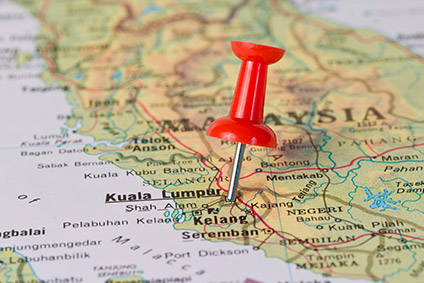
Foreign direct investments (FDI) into Malaysia’s garment and textile sector are set to rise further this year on the back of a strong performance in 2017, an official from the Malaysian Investment Development Authority (MIDA) has told just-style.
“Within the six months from January to June 2018, the total investments in the sector reached MYR244.8m (US$58.73m) of which FDI accounted for MYR112m (US$26.87m),” says a spokesperson from MIDA.

Discover B2B Marketing That Performs
Combine business intelligence and editorial excellence to reach engaged professionals across 36 leading media platforms.
This compares with MYR428.8m (US$102m) of investments approved across 12 projects for the garment and textile sector last year, of which MYR322.3m (US$77.35m) – 75.2% – came from foreign investors. All these projects put together generated 1,850 jobs comprising skilled positions for engineers, quality controllers, and highly skilled technicians, the spokesperson adds.
MIDA expects investments to continue to rise in 2018 based on the performance in the first half of the year. The Asian Development Bank (ADB) has also sounded positive about a rise a in FDI in general during 2018.
In August this year, Dr Bernard Ng Thiam Hee, ADB principal economist at Southeast Asia Regional Department, said Malaysia’s FDI will also probably increase in 2019 as the country remains “very competitive, especially in the exports sector.”
That said, the priority is “not just about the number of investors or absolute value of investments,” the MIDA spokesperson says, adding: “It is about bringing in investments that can provide Malaysians with quality job opportunities.”

US Tariffs are shifting - will you react or anticipate?
Don’t let policy changes catch you off guard. Stay proactive with real-time data and expert analysis.
By GlobalDataThe fact that some investment is flowing into digital technologies has increased optimism. The spokesperson says this “has brought about a whole new dimension to the industry,” and is encouraging Malaysia’s clothing and textile sector to explore serving more niche markets and push its production upstream.
High value-added shift
In 2017, garments and textiles together were the 11th largest contributor of Malaysian exports of manufactured goods, generating MYR15.3bn (US$3.67bn) in receipts, according to government data.
And the government has helped Malaysian businesses to go high-tech. Trying to accelerate the shift towards high value-added, knowledge-intensive and innovation-based industries, the Malaysian government introduced an Automation Capital Allowance (ACA) in its 2015 budget.
“High labour-intensive industries including textiles are entitled to a 200% capital allowance to undertake automation on the first MYR4m [US$960,000] in terms of expenditure incurred from 2015 up to 2017,” the spokesperson explains.
MIDA, too, is playing its part in getting the Malaysian clothing industry to adopt automation and smart manufacturing concepts and technologies in their processes. It organised the Fashion & Design Conference 2018, this September, bringing together solution providers, design and research activities and material producers trying to take Malaysia’s fashion industry to the next level of development.
During this event Malaysia’s ministry of international trade and industry (MITI) announced plans to set up a textile design federation to assist fashion entrepreneurs in building their future.
Besides, the US-China trade war has played to the advantage of garment-making Association of Southeast Asian Nations (ASEAN) countries, including Malaysia.
With Chinese clothing and textile manufacturers looking to move production because of rising costs and maybe to avoid American tariffs, ASEAN countries are a preferred destination, says Regina Leong, president of the Malaysia Textile Manufacturers Association (MTMA).





